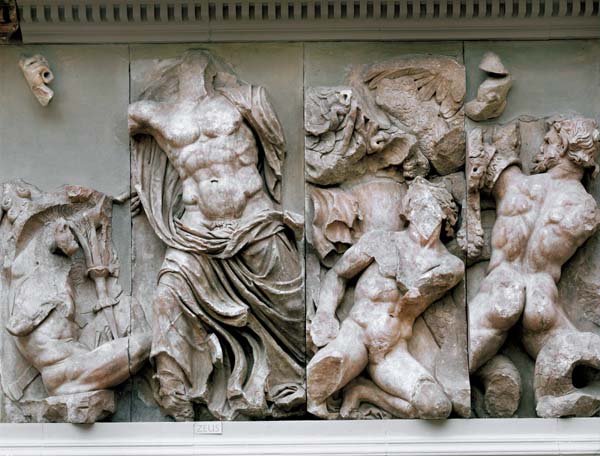Image Details

Zeus, the supreme god in the Greek pantheon (the now-headless figure), battles the Giants in a scene on the east façade of the Great Altar. At lower left is Heracles, a mortal hero who aided Zeus and the other gods against the Giants. The gods had been told by an oracle that the Giants could not be destroyed by a deity, so they enlisted Heracles to fight with them (Heracles’ father was a god but his mother was a human). In Greek mythology, Heracles was given 12 difficult tasks to fulfill, after which he would gain immortality; the best known of these is his deliverance of Prometheus, who had stolen fire from the gods and given it to man. As his punishment, Prometheus was bound to a rock; every day an eagle flew by and devoured his liver (which grew back by night, however). Heracles killed the eagle and freed Prometheus.
Also shown on this panel are two Giants. The figure right of center, author Collins has suggested, may be Typhon, a monster from whose mouth was believed to drip red-hot lava. In a battle against the gods, Typhon hurled Mount Aetna at the gods, but Zeus flung thunderbolts at it; the mountain fell back and trapped Typhon below. Typhon was believed to be still there, spewing smoke and lava through the top of the mountain.
